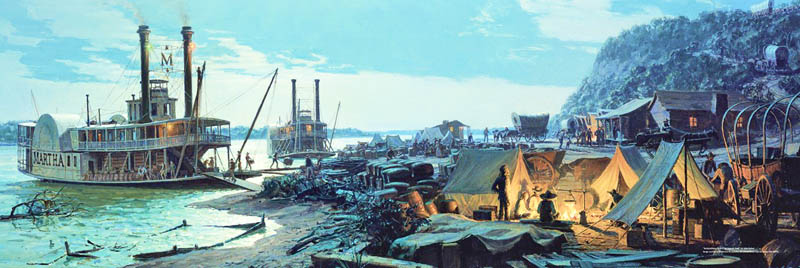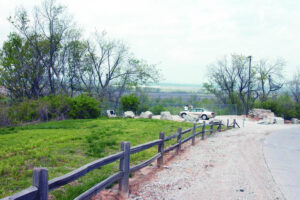Wayne City Landing, often called the Upper Independence Landing, was a jumping-off point for travelers, traders, and pioneers heading westward on the Santa Fe, Oregon, and California Trails.
The port was named Wayne City Landing in honor of Lieutenant Anthony Wayne, who camped on the bluffs in 1825 while keeping the Kanza Indians confined to their land to the west.
In the 1830s, it served as a supply port, and it was initially the closest Missouri River landing to the town of Independence, Missouri. Upon arriving at the landing, the pioneers and their goods made their way uphill to Independence and, from there, headed westward.
There was another steamboat landing important to Independence at Blue Mills, called the Lower Independence Landing because it was two miles downriver.
Wayne City Landing’s use varied from decade to decade but was not as successful or used as long as the Lower Independence Landing or the Westport Landing.
In 1844, a flood occurred, which created a sandbar in front of the landing. This obstacle encouraged river travelers to go further west to the Westport Landing. However, the landing was still utilized, and during the 1849 gold rush, more than 10,000 people were outfitted there.
The first railroad west of the Mississippi River was built between Wayne City Landing and Independence, operating on wooden rails with ox-drawn carts from 1850 to 1852. The railroad accommodated the trail traffic, delivering supplies from the East.
The landing no longer exists today. It was located below a bluff overlooking the town of Sugar Creek. Wayne City Landing is now privately owned and inaccessible. However, three wayside exhibits are open to the public on the north end of River Boulevard in Sugar Creek. They are located at East Kentucky Road and North River Boulevard.
©Kathy Alexander/Legends of America, updated June 2023.


